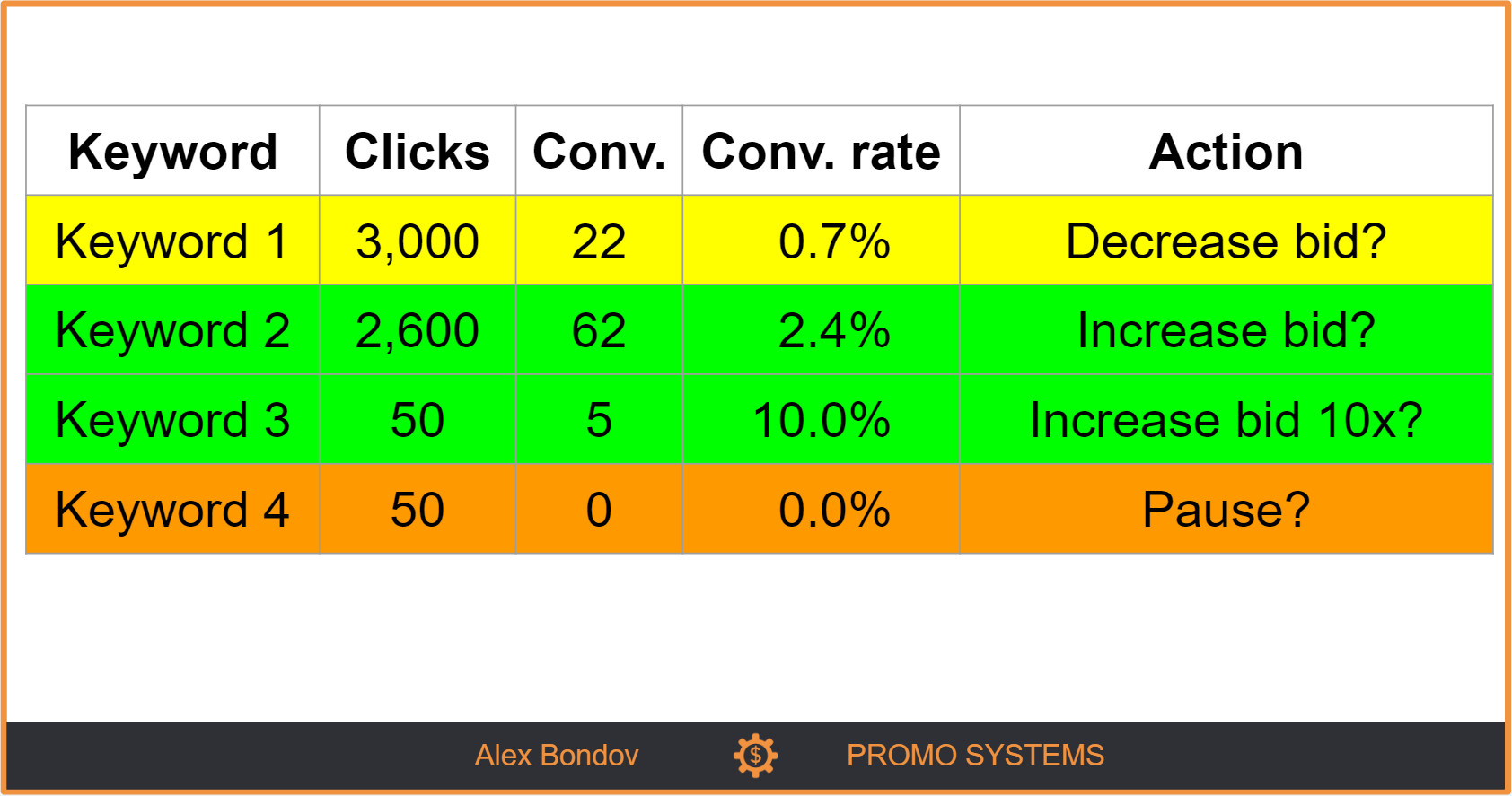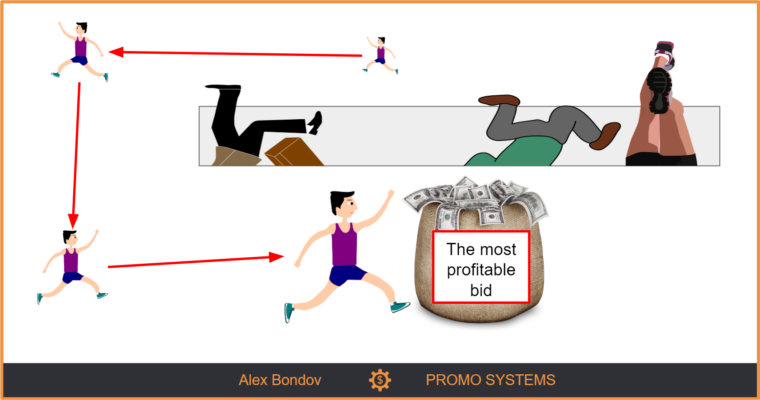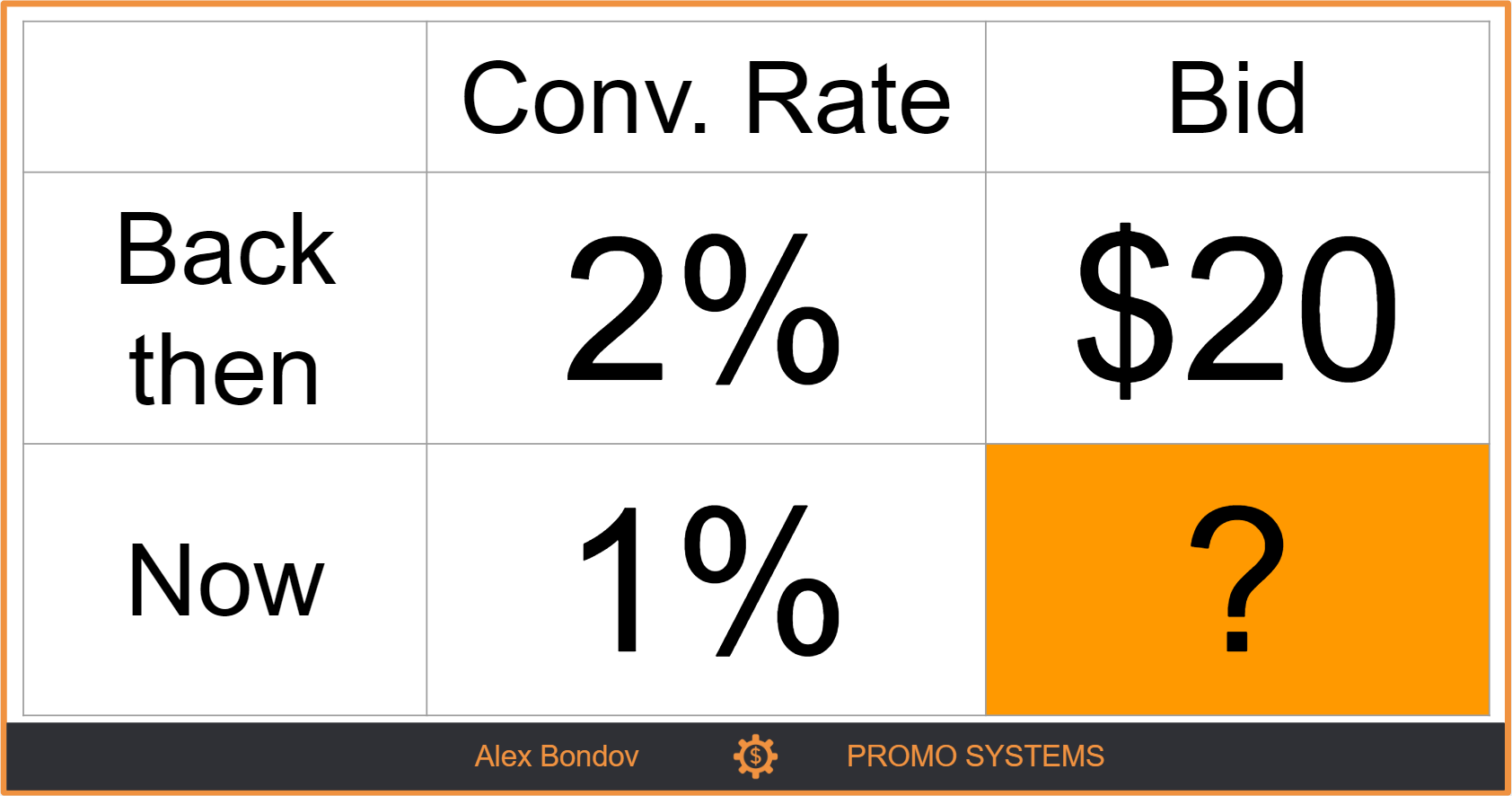The main pitfall of bid management has many forms, but in general, it reads something like:
- “address the poor performance of a keyword by decreasing its bid or even by pausing it
- react to a good performance of a keyword by increasing its bid”

Let’s see what happens when you do so and issues you’re running into:
1. In most cases, results per keyword aren’t statistically significant. Taking actions based on insignificant stats leads to unpredictable, inconsistent results. How to Tell if Your Conversion Rate is Statistically Significant.
2. Changing a Keyword’s Bid or Pausing it Changes Which Keyword Triggers an Ad for the Same Query
3. Stats per keyword are misleading – they obscure what’s really happening
4. Lower Bid => Fewer High-converting Auctions
5. You don’t know, by how much you should increase/decrease a bid. You can’t forecast a change in volume of clicks and CPC your new bid will lead to.
- The decrease of a bid may lead to a huge drop in the volume of clicks. And in some cases, it doesn’t decrease your fact CPC.
- The increase of a bid may lead to a huge increase in spending while gaining a small increment in the number of clicks.
Why? Because your fact cost-per-click is defined by your competitor’s bid (which you don’t know), not by your bid. Your bid only defines, which competitors you beat and appear above in search results. Learn more in this article.
What to do instead
- Fix the cause of poor performance instead of trying to fix the consequences
- Master performance-based automated bidding strategies. They address the issues listed above and free up your schedule for things a machine can’t manage as well (creating high-converting ads, for instance).





